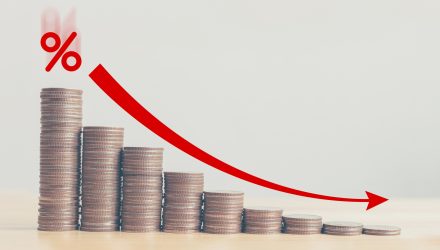Amid the coronavirus outbreak, the People’s Bank of China cut the one-year loan prime rate from 4.15% to 4.05%, and the five-year rate from 4.80% to 4.75%, making it the first cut since October last year, according to Refinitiv data. The move to cut rates was highly anticipated by analysts, especially amid the coronavirus outbreak.
“The ten basis point reduction will help companies weather the damage from the coronavirus at the margins,” wrote Julian Evans-Pritchard, senior China economist at consultancy Capital Economics, in a note.
“But even if the … cut is passed on to all borrowers, that would only decrease average one-year bank lending rates from 5.44% to 5.34%. The ability of firms to postpone loan repayments and access loans on preferential terms will matter more in the near-term,” he added.
U.S. Staying Put on Rates
Meanwhile in the U.S., the Federal Reserve reversed course from 2018 in 2019 by instituting three consecutive rate cuts and then staying put at its last policy meeting at the end of January. The minutes for that meeting were released on Wednesday, which suggest that the Fed may not move on rates for some time.
“They expected economic growth to continue at a moderate pace, supported by accommodative monetary and financial conditions,” the minutes said. “In addition, some trade uncertainties had diminished recently, and there were some signs of stabilization in global growth. Nonetheless, uncertainties about the outlook remained, including those posed by the outbreak of the coronavirus.”
Inflation Climbs in January
Betting on a rate increase at the next Fed meeting might shape up to be a profitable trade, as Wednesday’s trading session saw yields climb after the Bureau of Labor Statistics said producer price inflation during the month of January was better than expected. Headline inflation climbed 0.5% month over month, marking the highest move since Oct. 2018.
The yield the benchmark 10-year Treasury note climbed two basis points to 1.5806%, while the yield on the 30-year Treasury bond, which recently fell below 2%, climbed back into the 2% range once again at 2.0325%.
In addition to inflation data, the number of January housing starts came in better than expected. U.S. homebuilding fell less than expected in January as the number of permits climbed to a near 13-year high, according to the Commerce Department. With rates staying put, this should give prospective homeowners an incentive to purchase as mortgage rates stay at their current lows.
For more market trends, visit ETF Trends.

